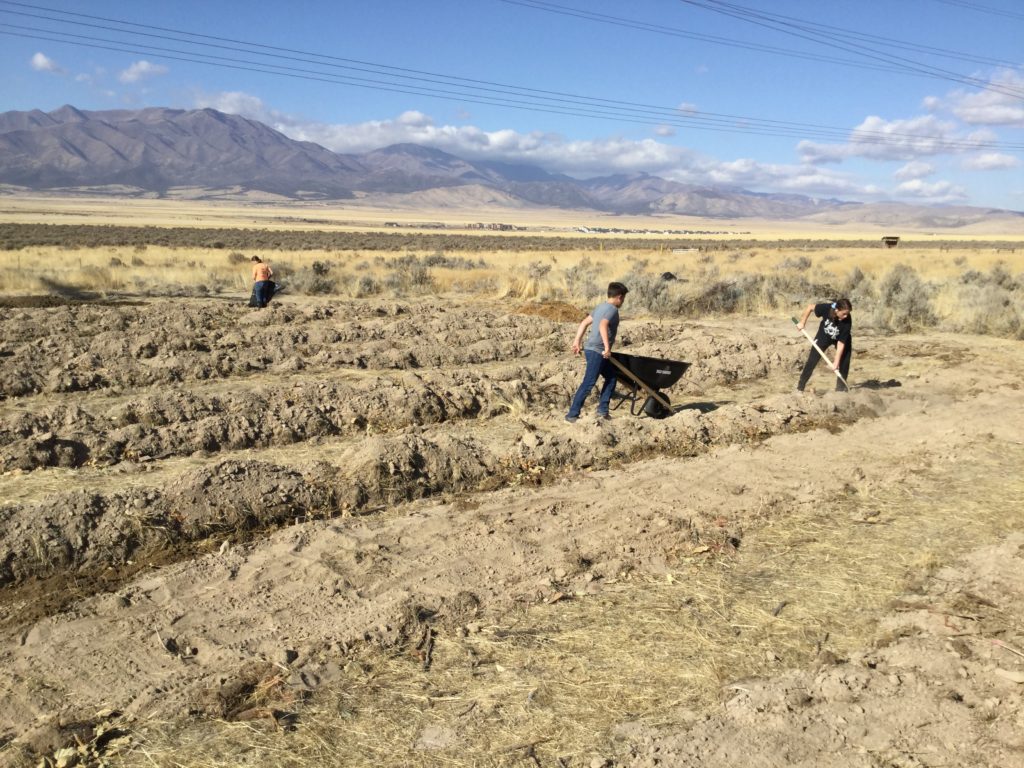
Working on the future raspberry patch. There are twelve 50 foot rows.
One of the projects we have been discussing and planning for almost forever has been a rather large raspberry patch. Ultimately we would like to run some sort of pick-your-own or selling shares of some sort, but to get to that point we have a lot of planning, planting and work to do.
As we have talked about before, the soil here is very barren and can be challenging to grow in. When its wet it is thick and sticky, when dry its almost like powder. We have found various permaculture methods that work very well in our arid climate and low fertility, including deep mulch, no-till and low-till. Another methods that is quite effective is the combination of hugelkultur and swales, often called “drop dead swales”.
Hugelkulturs are hills or various sizes made by piling old logs and branches then covering the up with compost and soil. The hugelkultur then naturally collects moisture in the old, dead wood and as it breaks down creates nutrients for the plants that are planted in the hugelkultur. The problem with classic hugelkulturs in our climate is that we have a hard time having enough natural moisture to keep it wet enough. We are just too dry, in my opinion. So we add in the swale. A swale is a man made natural depression in the land that helps collect rain water. Instead of the rain water running off it collects and soaks into the earth naturally crating pockets of fertility. a swale can be as big or little as needed.
We combine the two.
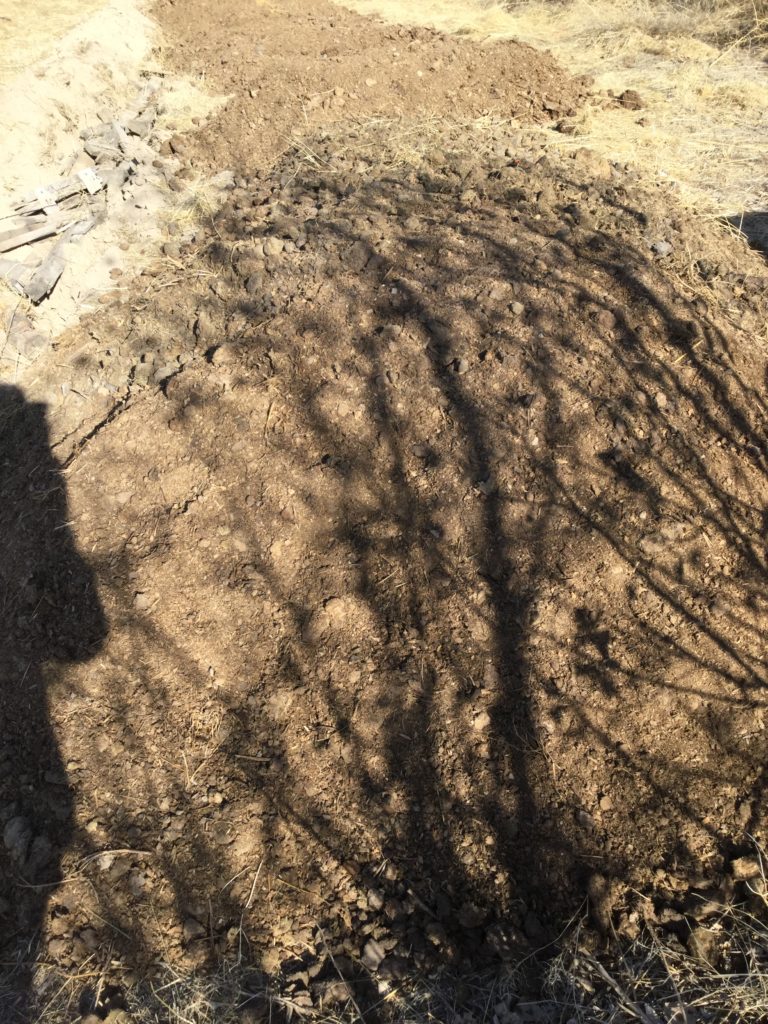
Loads and loads of horse manure hauled down from our very gracious neighbors.
In areas where we will be planting perennial beds and trees we use the “drop dead swale” method to help create water retention and fertility to places that cant always have piles of compost added easily. In theory once the perennial plants get going they will naturally create their own fertility as long as they have enough water.
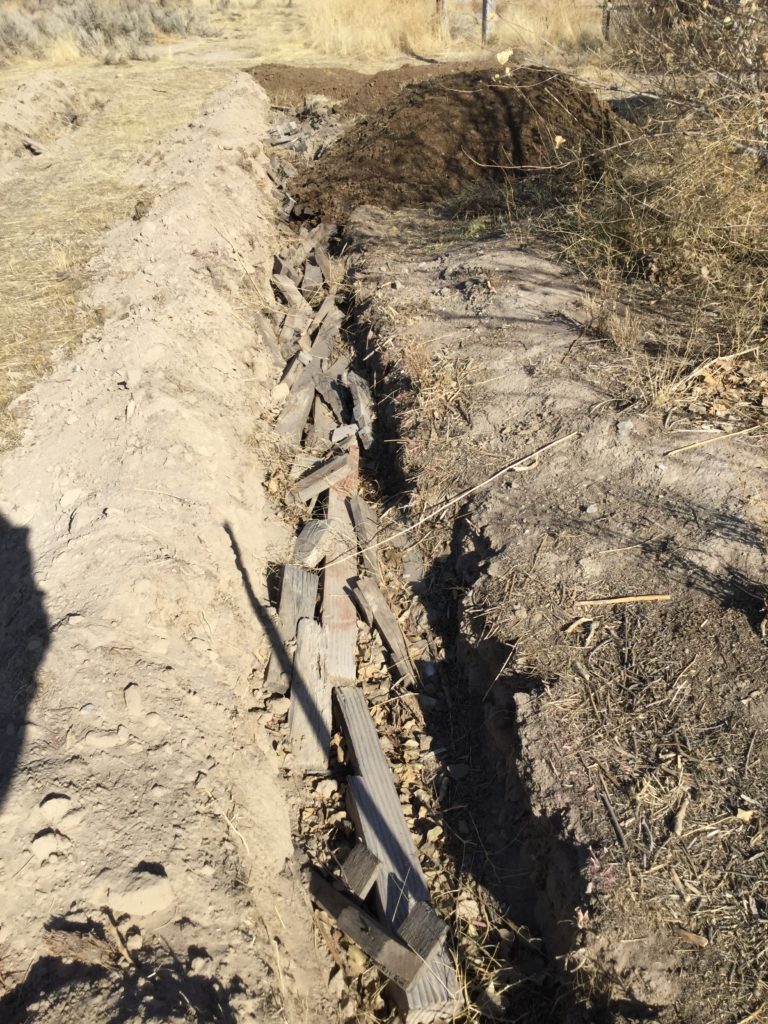
A swale filled with old wood, ready to have leaves and manure added.
To create a “drop dead swale” we first dig a nice big trench, about two feet deep. Then we add wood. Our property came with a lot of old, dry construction debris. Mostly 2×4 ends that have been laying exposed for close to 15 or more years. This stuff is dry, and perfect. We fill the trenches about half way.
On top of the old wood we add dead leaves and then horse manure and bedding. We almost completely fill the trenches. This adds organice matter that will increase the water storing ability of the soil and the manure adds nutrients. These will also attract beneficial micro-organisms and worms.
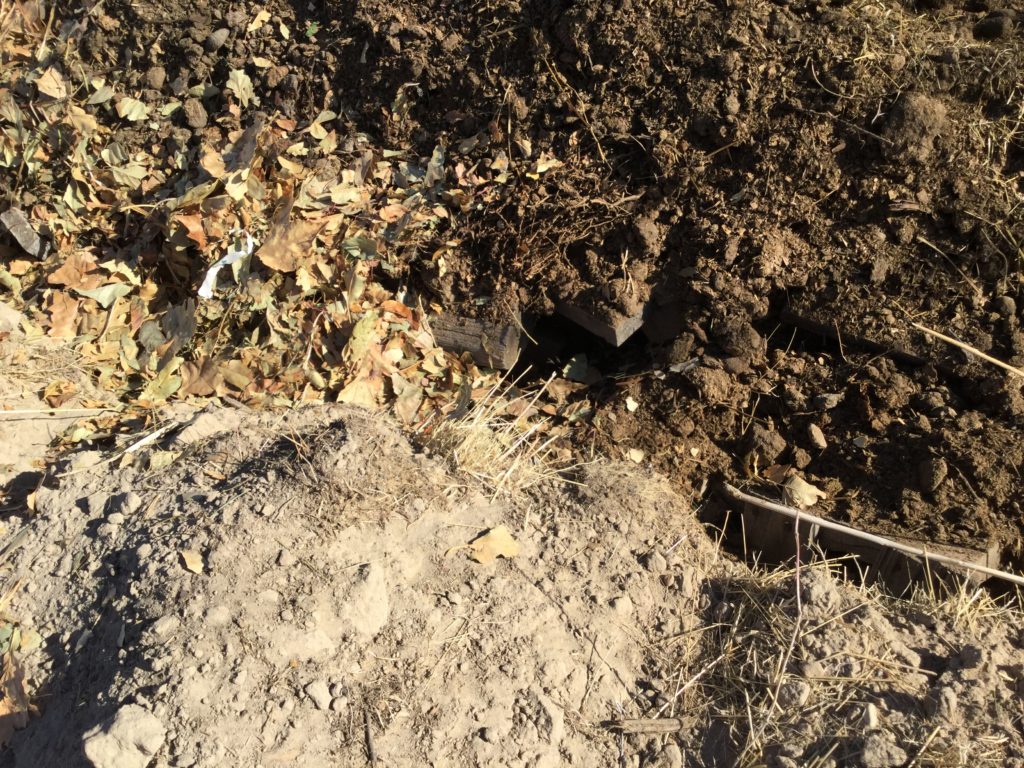
A swale with wood, leaves and manure.
When the trenches are filled in there is enough dirt to leave a nice ridge on the downward slope side of the field, so as rain comes and snow melts the water wont just run off the land, it will stop and soak into the dry wood waiting for it. This will reduce the need for supplemental water during the long, hot, dry summers.
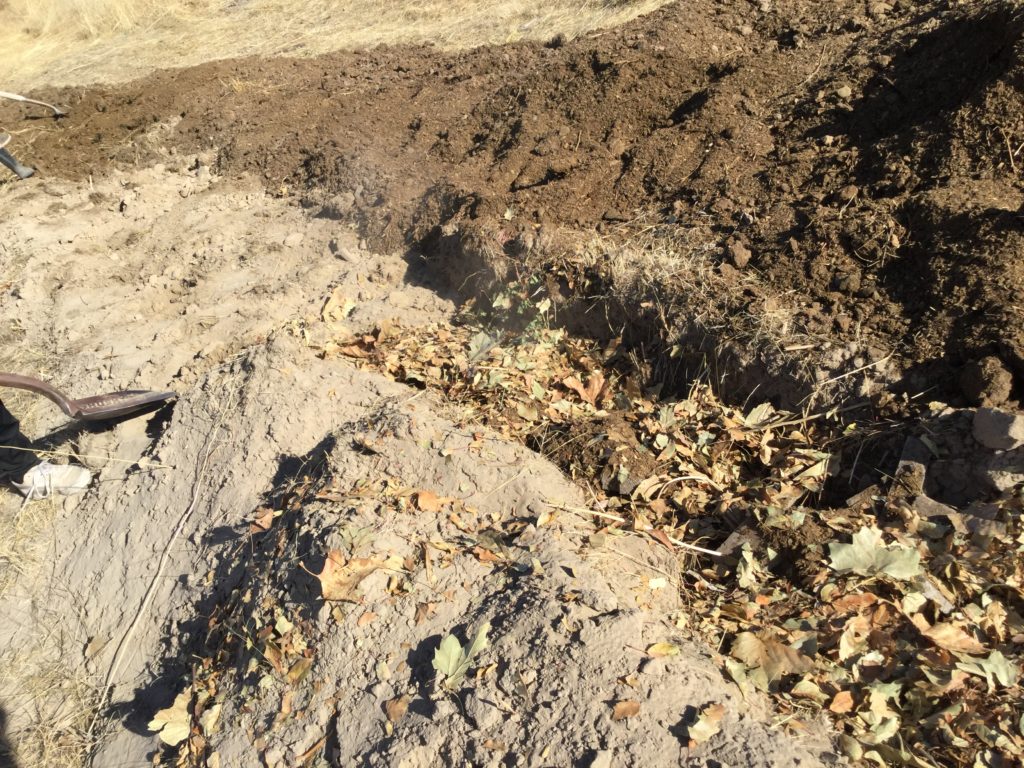
A swale being cover with a small ridge left to catch water run off.
We are furiously working on this before the snow comes, we want it ready for raspberry planting this spring. This is long hard work, with the promise of fields of raspberries some day.

How can we help?
I have wanted to go on one of your tours forever! We could use help getting the trenches filled, right now it is a bit hit and miss as to when we can do it because of the weather and the amount of daylight.
That was a truly interesting read. Wish we were there to help you with the work.